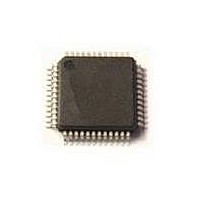ST802RT1BFR STMicroelectronics, ST802RT1BFR Datasheet - Page 44

ST802RT1BFR
Manufacturer Part Number
ST802RT1BFR
Description
TXRX ETH 10/100 REAL TIME 48LQFP
Manufacturer
STMicroelectronics
Type
Transceiverr
Datasheet
1.ST802RT1AFR.pdf
(58 pages)
Specifications of ST802RT1BFR
Number Of Drivers/receivers
1/1
Protocol
Ethernet
Voltage - Supply
3.15 V ~ 3.45 V
Mounting Type
Surface Mount
Package / Case
48-LQFP
Operating Supply Voltage
3.3 V
Supply Current
4.5 mA
Operating Temperature Range
- 40 C to + 105 C
Mounting Style
SMD/SMT
Power Dissipation Pd
315 mW
Lead Free Status / RoHS Status
Lead free / RoHS Compliant
Other names
497-10431
Available stocks
Company
Part Number
Manufacturer
Quantity
Price
Company:
Part Number:
ST802RT1BFR
Manufacturer:
JRC
Quantity:
4 500
Company:
Part Number:
ST802RT1BFR
Manufacturer:
STM
Quantity:
1 576
Company:
Part Number:
ST802RT1BFR
Manufacturer:
STMicroelectronics
Quantity:
10 000
Device operation
7.15
Figure 7.
7.16
7.17
44/58
Transmit isolation
Transmit isolation
Transmit isolation isolates the PHY from the MII and Tx +/- interface and is activated by
setting bit 5 of the 100Base-TX control register (RN13[5]). As with isolate mode, all MII
inputs are ignored and all MII outputs are tri-stated. Additionally, all link pulses are
suppressed.
Automatic MDI / MDIX feature
The automatic MDI / MDIX feature compensates for using an external crossover cable. With
auto-MDIX, the ST802RT1x automatically detects what the other device is and switches the
TX & RX pins accordingly. The state machine basically controls the switching of the tdp/tdn
and the rdp/rdn signals prior to the auto-negotiation communication. The swapping occurs
to allow FLP/NLP to be transmitted and received in the event that the external cable
connections have been swapped.
RMII interface
The reduced media independent interface (RMII) provides a low-cost alternative to the IEEE
802.3u MII interface. It can support 10 and 100 Mbit data rates with a single clock, using
independent 2-bit wide transmit and receive paths. A single synchronous reference clock
(SCLK pin 32) of 50 MHz is used as a timing reference for all transmitters and receivers. By
doubling the clock frequency relative to the MII, four pins are saved in the data path, which
uses two transmit data inputs and two receive data outputs instead of four lines for each
direction in the MII interface. Since start-of-packet and end-of-packet timing information is
preserved across the interface, the MAC is able to derive the COL signal from the receive
and transmit data delimiters, saving another pin.
Doc ID 17049 Rev 1
ST802RT1A, ST802RT1B















